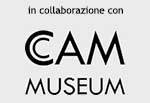Video art and music, an ancient liason
Between video art and music, there is an ancient liason, indeed quite original. Long before they made their appearance the music video in the ’60s, and certainly well before they established themselves as a video genre in the’ 80s. Nam June Paik, father of video art, was in fact a musician. He graduated in Tokyo with a thesis on Schoenberg, he moved to Munich to continue his studies, and here he met Karlheinz Stockhausen and John Cage, as well as some artists such as George Maciunas, Joseph Beuys and Wolf Vostell. In 1962 he joined the Fluxus movement, inspired by Cage, which marks his transition to visual art. In ’63, he made his first major exhibition, significantly entitled ‘Music Exhibition — Electronic Television’. The whole area that revolves around Fluxus, or that influences its influence, is however marked by the influence of music as an artistic expressive form. Which is quite obvious, if we think that both these artistic forms share the time dimension. As it is obvious to think that, especially in this first phase, an artist of musical training (as Paik) has equally naturally transposed, in the videoartist production, elements of the musical composition, such as rhythm, or dissonance, applying them to images rather than to the notes.
Naturally, what was originally a cultural influence, in the following decades becomes linguistic contamination; when — in the ’80s — the production of promotional music videos went from film to film to video, commercial television stations exploded, and the first TV channels (MTV) exclusively dedicated to music were born, the time became mature because, in a completely natural, video art and music meet. Obviously, part of this contamination is due to the simple fact of using the same means of production / reproduction, which in themselves have peculiar compositional characteristics. But undoubtedly — even under the pressure of some more attentive and sensitive artists — the videoartic language, its expressive modality, enters the world of video clips, especially in the case of more avant-garde productions. Perhaps the most emblematic case of this contamination is that of the Icelandic artist Björk. But also Peter Gabriel, David Bowie, Tom Waits, Madonna, R.E.M., Red Hot Chili Peppers … Of this mutual influence, an exhibition was held, ‘Music for the eyes’. Crossovers between video art, pop music, music videos’ [1], held in the exhibition space of Santa Maria della Scala (Siena) a few months ago.
However, it is clear that there is a technical power of video, much greater than that of cinema, and that this power exerts a notable influence on the video language tout court, regardless of the context in which it is used. Power and influence that occur especially when two elements coincide: brevity and openness to experimentation. And so not only video art and music videos, but — for example — even commercials, television releases, tv title sequences, etc. Also of this liason has in some way occupied an exhibition (‘Revolution of the Eye: Modern Art and the Birth of American Television’ [2]), a few years ago, at the Jewish Museum, during which it was — among other things — presented the television project of MoMA (never aired) ‘Architectural Millinery’, a sort of guided tour of the neglected art of New York. The video language — today so pervasive — is in short a debtor towards video art, which has been avant-garde aesthetic and expressive since its debut. Whether we talk about music videos, commercials, or generically television, the debt is there, even when we do not see it.
1 — Music for the eyes
2 — Revolution of the Eye[
Enrico Tomaselli / 2020-05-01]
<< back



